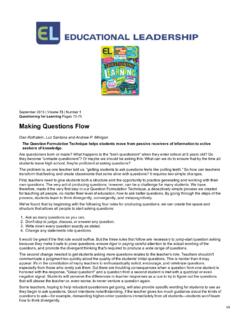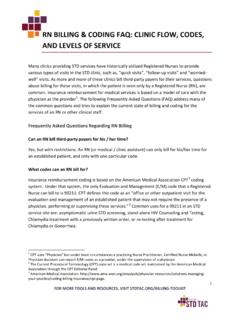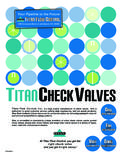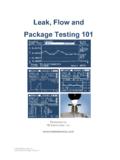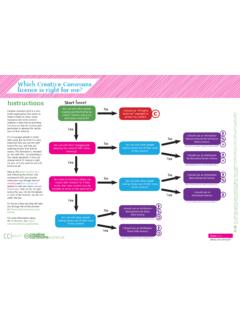Transcription of “GROSS” PRESENT VALUE and “EXTERNAL” RATE OF …
1 NO13057 gross PRESENT VALUE and external RATE OF RETURN AN ALTERNATIVE PEDOGY FOR TEACHING DISCOUNTED CASH FLOW ANALYSIS MICHAEL J. CREAN, PHD BURNS SCHOOL OF REAL ESTATE AND CONSTRUCTION MANAGEMENT DANIELS COLLEGE OF BUSINESS UNIVERSITY OF DENVER AABRI INTERNATIONAL CONFERENCE NEW ORLEANS, LA MARCH 21-23, 2013 NO13057 ABSTRACT gross PRESENT VALUE and external RATE OF RETURN AN ALTERNATIVE PEDOGY FOR TEACHING DISCOUNTED CASH FLOW ANALYSIS The traditional content of and pedagogy for teaching Discounted Cash Flow (DCF) Analysis includes the investment performance measures of Net PRESENT VALUE (NPV), Profitability Index (PI), and Internal Rate of Return (IRR), at a minimum, and may also include Adjusted or Modified Internal Rate of Return (AIRR or MIRR). This paper offers an alternative definition of and pedagogy for teaching these financial concepts. For example, it is demonstrated herein that: (1) Net PRESENT VALUE (NPV) is not a VALUE ; (2) Profitability Index (PI) does not measure profit; (3) Internal Rate of Return (IRR) usually is not a return on the Initial Investment; (4) gross PRESENT VALUE (GPV) is a prerequisite to Net PRESENT VALUE and it, unlike NPV, is a VALUE ; and (5) A full and complete understanding of the Internal Rate of Return (IRR) requires an understanding of the external Rate of Return (ERR)!
2 This paper also offers a set of concatenation statements which link the so noted financial measures of investment performance one to another, thereby making the pedagogy more robust! NO13057 INTRODUCTION The traditional content of and pedagogy for teaching Discounted Cash Flow (DCF) Analysis includes the investment performance measures of Net PRESENT VALUE (NPV), Profitability Index (PI), and Internal Rate of Return (IRR), at a minimum, and may also include Adjusted or Modified Internal Rate of Return (AIRR or MIRR). This paper offers an alternative definition of and pedagogy for teaching these financial concepts. For example, it is demonstrated herein that: (1) Net PRESENT VALUE (NPV) is not a VALUE ; (2) Profitability Index (PI) does not measure profit; (3) Internal Rate of Return (IRR) usually is not a return on the Initial Investment; (4) gross PRESENT VALUE (GPV) is a prerequisite to Net PRESENT VALUE and it, unlike NPV, is a VALUE ; and (5) A full and complete understanding of the Internal Rate of Return (IRR) requires an understanding of the external Rate of Return (ERR)!
3 This paper also offers a set of concatenation statements which link the so noted financial measures of investment performance one to another, thereby making the pedagogy more robust! TRADITIONAL PEDAGOGY The typical finance course/professor presentation states that the NPV is the difference between the PRESENT VALUE of future cash flows one (CF1) through the last (CFn) all discounted at the investors hurdle or discount rate (i), and the initial investment symbolized by cash flow zero (CF0). The NPV equation, therefore, may be written as follows: NPV = CF1 + CF2 +..+ CFn - CF0 Known: CF1-n; i; CF0 (right-hand side of equation) (1+ i)1 (1+ i)2 (1+ i)n Unknown: NPV (left-hand side of equation) The PI equation uses the same numbers as the NPV equation uses, however, CF0 is not subtracted from the PRESENT VALUE of the cash flows , but rather is divided into them, forming a ratio as follows: CF1 + CF2 +.
4 + CFn Known: CF1-n; i; CF0 (right-hand side of equation) PI = (1+ i)1 (1+ i)2 (1+ i)n Unknown: PI (left-hand side of equation) CF0 The IRR equation uses the same cash flows (CF1-n) as the NPV and PI equations. However, instead of the discount being a known input provided by the investor, the i is the unknown discount rate that balances the IRR equation, , makes the right-hand side of the IRR equation equal the left-hand side of the IRR equation as follows: NO13057 CF0 = CF1 + CF2 +..+ CFn Known: CF0; (left-hand side of equation) (1+ i)1 (1+ i)2 (1+ i)n CF1-n (right-hand side of equation) Unknown: IRR = i (right-hand side of equation) Some IRR presentations write the IRR equation as an NPV equation equal to zero (0), stating that the IRR equals the discount rate (i) that makes the NPV equal zero (0), as follows: 0 = CF1 + CF2 +.
5 + CFn - CF0 Known: CF1-n; CF0 (right-hand side of equation) (1+ i)1 (1+ i)2 (1+ i)n NPV = 0 (left-hand side of equation) Unknown: IRR = i (right-hand side of the equation) This equation defines the IRR in terms of the NPV. Likewise, the following equation writes the IRR equation as a PI equation equal to one ( ), stating that the IRR equals the discount rate (i) that makes the PI equal one ( ), as follows: CF1 + CF2 +..+ CFn Known: CF1-n; i; CF0 (right-hand side of equation) = (1+ i)1 (1+ i)2 (1+ i)n PI = (left-hand side of equation) CF0 Unknown: IRR = i (right-hand side of equation) In the opinion of many, to define one complex term (IRR) in terms of another complex term (NPV or PI) only further complicates the teaching and understanding of former term (IRR).
6 Better to define any and all terms in the simplest manner. To do otherwise, would be a blatant violation of the so-called Occam s Occam s Razor, also known as the Principle of Parsimony, is the meta-theoretical principle that may be translated as: (1) entities must not be multiplied beyond necessity ; or (2) a plurality (of reasons) should not be posited without necessity. or more simply; (3) Keep It Simple, Stupid! The so-called KISS Principle . Occam suggested that the simplest solution is usually the best and/or the most correct. The alternative pedagogy presented herein for discounted cash flow analysis is meant to follow the tenets of Occam; there will be no violations of his Razor in this paper! TRADITIONAL (MIS)UNERSTANDING OF DCF ANALYSIS & ALTERNATIVE PEDAGOGY The DCF equations presented supra usually lead the student (and often the professor, too) to draw the following conclusions about the understanding of the DCF concepts and equations: _____ 1 William of Occam, England, b.
7 , d. , ranks among the most important philosopher-theologians and one of the greatest logicians of the Middle Ages. NO13057 (1) Most texts and professors never discuss gross PRESENT VALUE . Yet, GPV is a prerequisite to NPV, as demonstrated infra. (2) NPV is a VALUE . VALUE is the noun modified by two adjectives: Net and PRESENT . However, NPV is not a VALUE , thereby making the adjectives and the term NPV irrelevant and misunderstood, as demonstrated infra. (3) PI measures profit. Profit is defined as Revenues minus Expenses. PI is NOT a measure of profit, as demonstrated infra. (4) IRR is a return on Cash Flow Zero (CF0), the Initial Investment. This is seldom the case, as demonstrated infra. (5) IRR assumes reinvestment at the IRR, while NPV assumes reinvestment at the Discount Rate. In fact, neither IRR nor NPV assume anything about reinvestment. The proof of the lack of reinvestment is demonstrated infra. Exhibit I is offered as an alternative pedagogy for teaching Discounted Cash Flow (DCF) Analysis.
8 The equations for each of the DCF metrics are linked to one another via sets of numerical and verbal concatenation statements. Exhibit II will PRESENT more information regarding the IRR and the matter of reinvestment. NO13057 EXHIBIT I ACRONYMS FOR INVESTMENT DECISION MAKING DISCOUNTED CASH FLOW (DCF) ANALYSIS 1. WHAT IS ITS WORTH, VALUE , OR gross PRESENT VALUE ? GPV 2. SHOULD I BUY IT? V-PD; V/PR 3. IF I BUY IT, WHAT RATE OF RETURN WILL I EARN? IRR The DCF equations for the gross PRESENT VALUE (GPV), the VALUE -Price Differential (V-PD), and the VALUE /Price Ratio (V/PR), where the discount rate (i) is the known or chosen discount rate, and the DCF equation for the Internal Rate of Return (IRR), where the discount rate (i) is the unknown or calculated rate that balances the IRR equation answer these questions and are displayed infra.
9 1. HOW MUCH IS IT WORTH? WHAT S ITS VALUE ? GPV gross PRESENT VALUE (DCF VALUE ) EQUATION GPV = CF1 + CF2 +..+ CFn Known: CF1-n ; i (1+ i)1 (1+ i)2 (1+ i)n Unknown: PV *GPV = DCF VALUE ; VALUE Note: Price (CF0) is not part of the equation! 2. SHOULD I BUY IT? V-PD; V/PR VALUE -PRICE DIFFERENTIAL (V-PD)* EQUATION (Comparing VALUE and Price via Subtraction) V-PD = CF1 + CF2 +..+ CFn - CF0 Known: CF0-n; i (1+ i)1 (1+ i)2 (1+ i)n Unknown: V-PD * V-PD = GPV CF0 V-PD = VALUE Price VALUE /PRICE RATIO (V/PR)* EQUATION (Comparing VALUE and Price via Division) V/PR = GPV / CF0 Known: CF0-n; i Unknown: V/PR * V/PR = VALUE / Price 3.
10 IF I BUY IT, WHAT RATE OF RETURN WILL I EARN? IRR INTERNAL RATE OF RETURN (IRR = i)* EQUATION CF0 = CF1 + CF2 +..+ CFn Known: CF0-n (1+ i)1 (1+ i)2 (1+ i)n Unknown: IRR = i _____ *@ i, CF0 = GPV; or Price = VALUE ; or Price = DCF VALUE The IRR is the calculated (not chosen) discount rate (i) that makes VALUE equal Price, ie., the calculated discount rate that makes the equation s RHS = the equation s LHS. NO13057 SOME OBSERVATIONS 1. GPV is the VALUE of any and all investments. GPV has an equation that is different than the NPV equation. Most texts and professors do not discuss/teach GPV, per se. The calculation of VALUE (GPV) is rudimentary to all investment decisions. One cannot buy low and sell high without VALUE . Price, symbolized as CF0, is NOT a part of the GPV equation (Price is not an input to get VALUE ).










